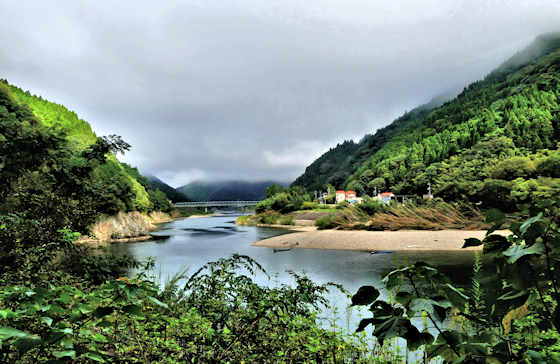Most years on May 5th we cross over the river to the Suijin Matsuri in Kawado. This year we went instead to our local
Suijin Matsuri in Tanijyugo.Like all matsuri, the kawado Suijin Matsuri begins with ceremonies in the local shrine.
Earlier in the morning the kids had their own
Enko Matsuri.The priest told me that this is the most important ceremony of the year. Kawado is built in the fork of 2 rivers, the Yato and the Go, and has suffered from devastating floods, most recently 50 years ago, so pacifying the god of the river is important. 2 other priests from villages upriver also take part.
The procession with the mikoshi descends the steps from the shrine on its short journey to the riverbank.
Kawado is not much bigger than Tanijyugo, yet the matsuri here is still well supported by the people of the village, though I hear complaints that every year there are fewer and fewer people.
To the accompaniment of flute and drum the parade heads for the riverbank where the boats wait for the next stage.
In the procession there are a couple of Hanakasboko, a parasol-like object with colorful attachments. I have been unable to find out anything about them, though later this week I'm going to a matsuri that has especially large ones, so maybe I can discover their origin and purpose.
The last 100 meters along the rocky riverbank the mikoshi is put on a trailer and pulled.






















